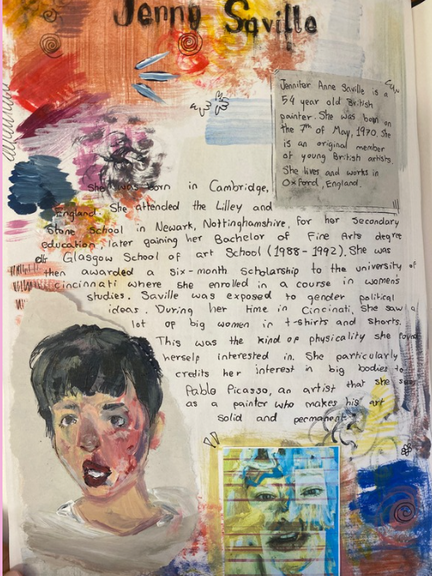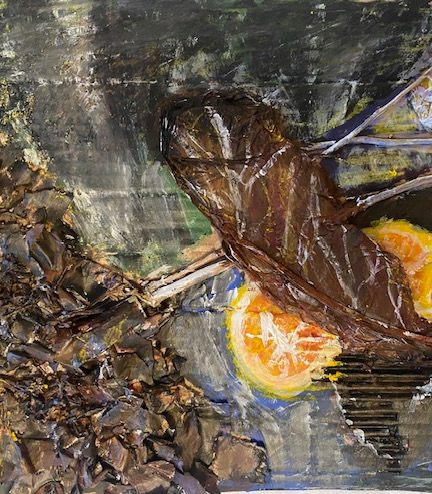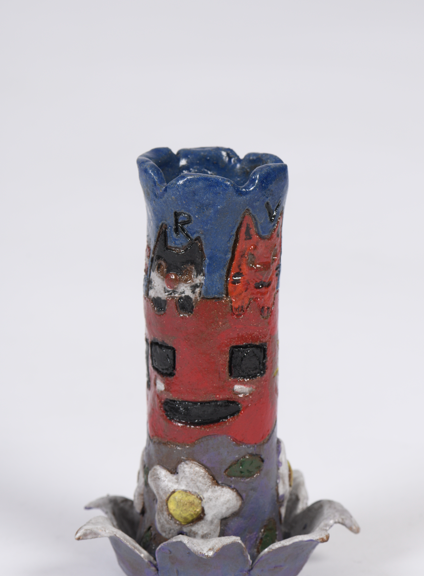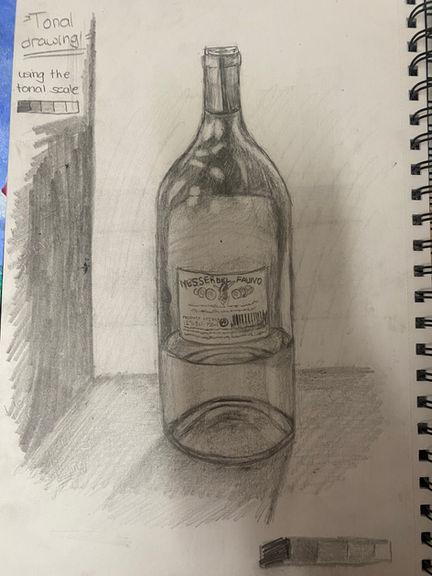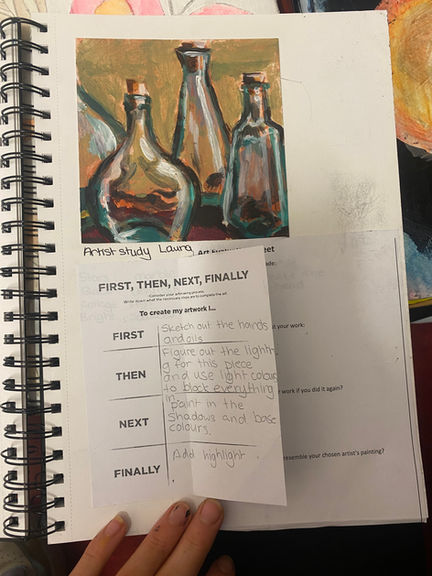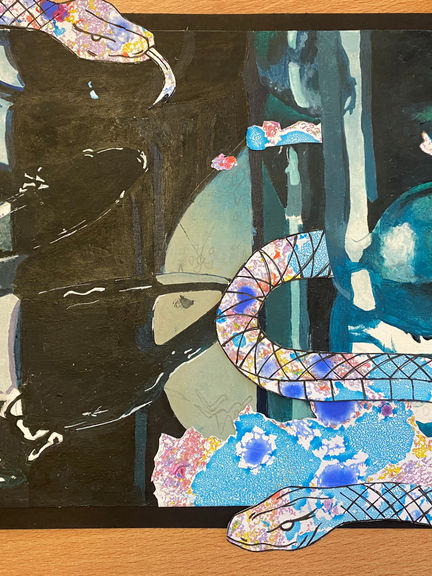Shannon Kleinschmidt
Teacher

Teaching Philosophy
Zimbabwe has a very strong cultural identity, deeply rooted in its myths, traditions, beliefs, and history. Growing up immersed in this rich heritage has greatly influenced my approach to teaching art, which I view as a powerful language for exploring sensitive issues in the classroom. Consequently, I have been drawn to teaching art through cultural, identity, global, contemporary, and conservationist lenses. This perspective is clearly reflected in my Units of Learning.
Jean Piaget’s assertion that “Knowledge is a consequence of experience” (Piaget, 1954) resonates deeply with me, shaping my approach to the Art classroom as an experiential space where students actively create and reflect. Guided by Piaget’s Constructivist view that learning occurs through hands-on engagement, I have made materiality a central element of exploration in my teaching practice.
Agency and autonomy is key to my Philosophy of Teaching, and I believe in achieving this through sustaining meaningful interactions with all of my students to encourage students to take responsibility for their own learning and choices. Aiming to create a safe and supportive classroom community where all students feel free to explore who they are, take creative risks, and learn from one another.
My role as a teacher has grown from being just a guide to becoming a facilitator and mentor. By fostering a student-teacher relationship built on mutual respect and trust I encourage students to take ownership of their learning while I support and continuously learn to adapt to their learning needs. This role has influenced student centred and collaborative teaching styles.
Peer feedback, open discussions, and real-world themes encourage critical thinking, reflection, and connections between art and social issues. Feedback is constructive, both challenging and affirming, while emotional awareness is supported through opportunities for self-expression and impact.
Assessment goes beyond technical skill, focusing on engagement, critical thinking, growth, and the ability to express ideas, respond to feedback, and develop as both artists and individuals.
I believe deeply in the transformative power of art and its ability to connect learning across disciplines and inspire change.
Student Work
Below is a small gallery of student work.
Units Of Learning
Here I have a selection of my Units Of Learning conducted on both of my placements. You will find brief summaries with links to pdf copies of the in depth Units.

Use of Odd Perspectives and Colour Schemes to Enhance the Beauty That Can be Found in Decay.
Decay is often seen as a negative or gross process. It suggests discarded or unwanted material whether it is natural or urban decay. Little is considered of the importance of decay in our natural environment in continuing the circle of life or the benefits decay brings. For example, the compost we use to fertilize and grow new vegetation is made of decaying matter still full of nutrients ready to be passed onto the sprouting vegetation. We rely on decay to feed and house the worms that we use to catch fish and to grow our plants that feed not only us but animals such as cows etc. Students will create an A3 acrylic painting of decaying fruits, vegetables or other natural forms such as leaves or trees. Using unusual perspectives and photo editing apps to create a strong visual to paint from. They will focus on colour and form in creating a visually interesting painting that portrays decay as an appreciated process.

Toxic Spills – Tonal Studies Of Reflective Surfaces
Students will explore tonal values and reflections by creating artwork inspired by toxic liquids in reflective containers, like glass bottles filled with oil, chemicals, or other pollutants.
They’ll use abstract photo editing to highlight swirls, bubbles, and contrasts in the reflective surfaces. The goal is to show the unexpected beauty in harmful, man-made substances, like the rainbow sheen of petrol spills, while raising awareness of pollution and its environmental impact.
This project combines aesthetic appeal with a deeper message about human-caused toxins

Coral Reef Lino Print Bag campaign.
The world is warming and so are the oceans . Winds over the sea surface are getting stronger causing the ocean currents to accelerate by around 5% per decade since the 1990s. The stronger winds have led to stronger currents which has increased the amounts of coral rubble allowing for significant decreases in the coverage of particular coral species. Coral reefs are home to a variety of crustaceans and they often collect seashells brought in by currents. Students will design a tote bag for the Foras Na Mara Marine Institute of Ireland as an awareness campaign of what is happening to Ireland’s coral reefs as a result of global warming. They will include detail of the Marine Logo using text and simplifying the complex form of various seashells through lino cutting and a limited colour palette. The evidence of a pop art style print should be realized.

Self Representative Vessels
Students will create a functional or decorative clay vessel like a bowl, pot, or vase, focused on self-expression. The design should reflect their personality, interests, or beliefs using monochromatic colours.
They can include:
-
Personality traits (e.g. calm = soft patterns, nature lover = leaves)
-
Hobbies (e.g. music notes, sports symbols)
-
Beliefs (e.g. cultural patterns, meaningful quotes)
The goal is to show what makes each student unique through their clay artwork.



Habitat Awareness Stop Motions
Habitat loss, mostly caused by human activities like farming, mining, and urbanization is a major reason many animals face extinction. Forests and other ecosystems are being cleared, affecting up to 80% of the species living there.
Since World Habitat Day is on October 5th this is a great this is a great timely topic. A habitat is where an animal lives and gets everything it needs to survive. But when humans destroy these spaces, animals are forced out, leading to biodiversity loss and extinction.
In this project, students will work in groups of three to research real events where animals lost their habitats due to human actions. Each group will create a stop-motion video using the Inshot app, with dough characters representing affected animals. Inspired by Richard Webber’s animation style, their videos will tell a short story about how human activities are harming animal habitats.

Fast Fashion
Students will explore the theme of consumerism, starting with fast food and moving into fast fashion. Both offer quick, cheap satisfaction but come at a cost to the environment and to workers.
Students will create A3 paintings on a surface of their choice (fabric, cardboard, or paper), blending ideas of fast food and fast fashion. Their work should reflect strong emotions and physical desire, like the excitement of a Zara sale or the craving for a favourite meal, but with clothes instead of food.
They’ll be inspired by artists like Jenny Saville, who captures intense human emotions through the body. The goal is to show the hunger and obsession behind fast fashion.




